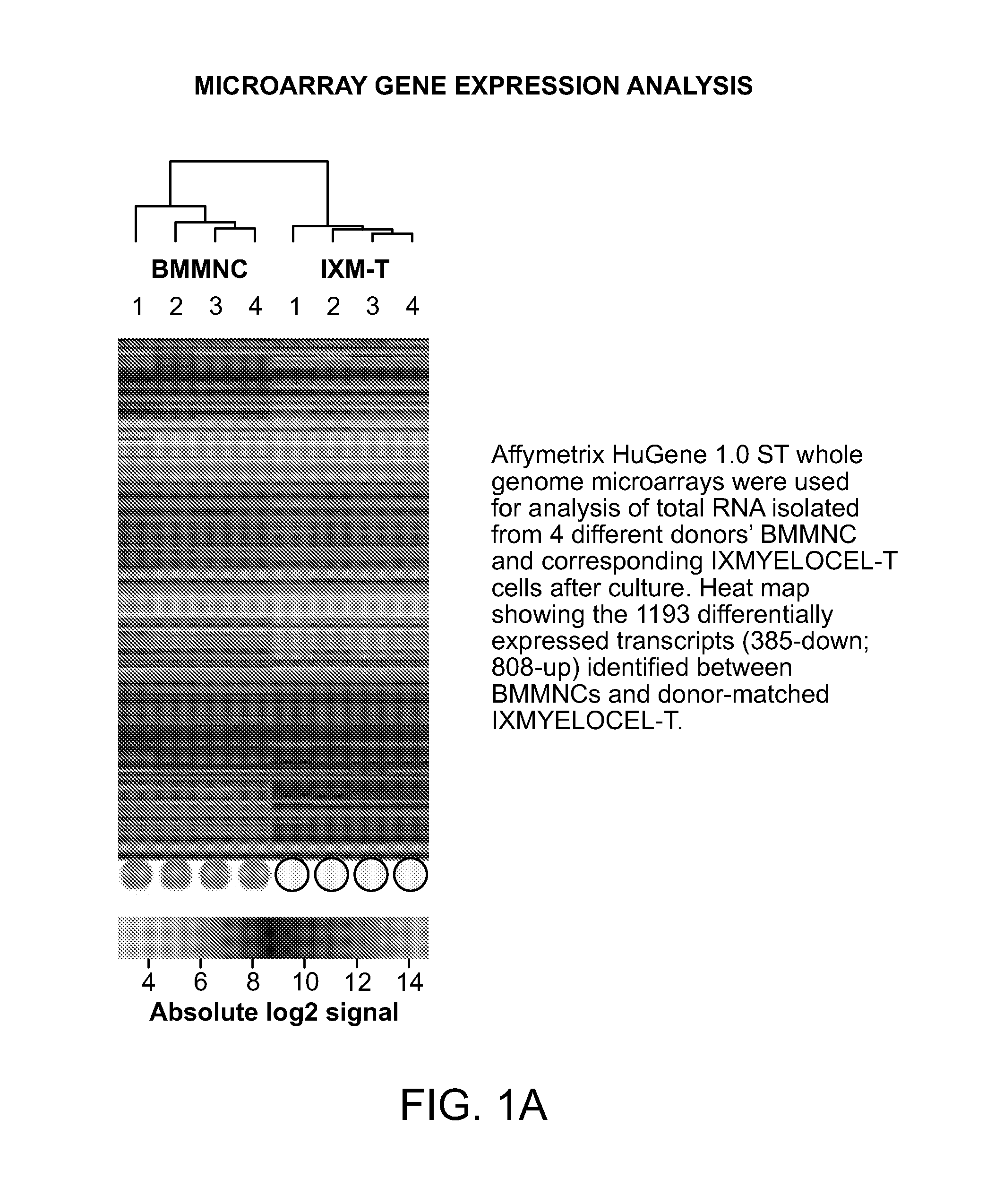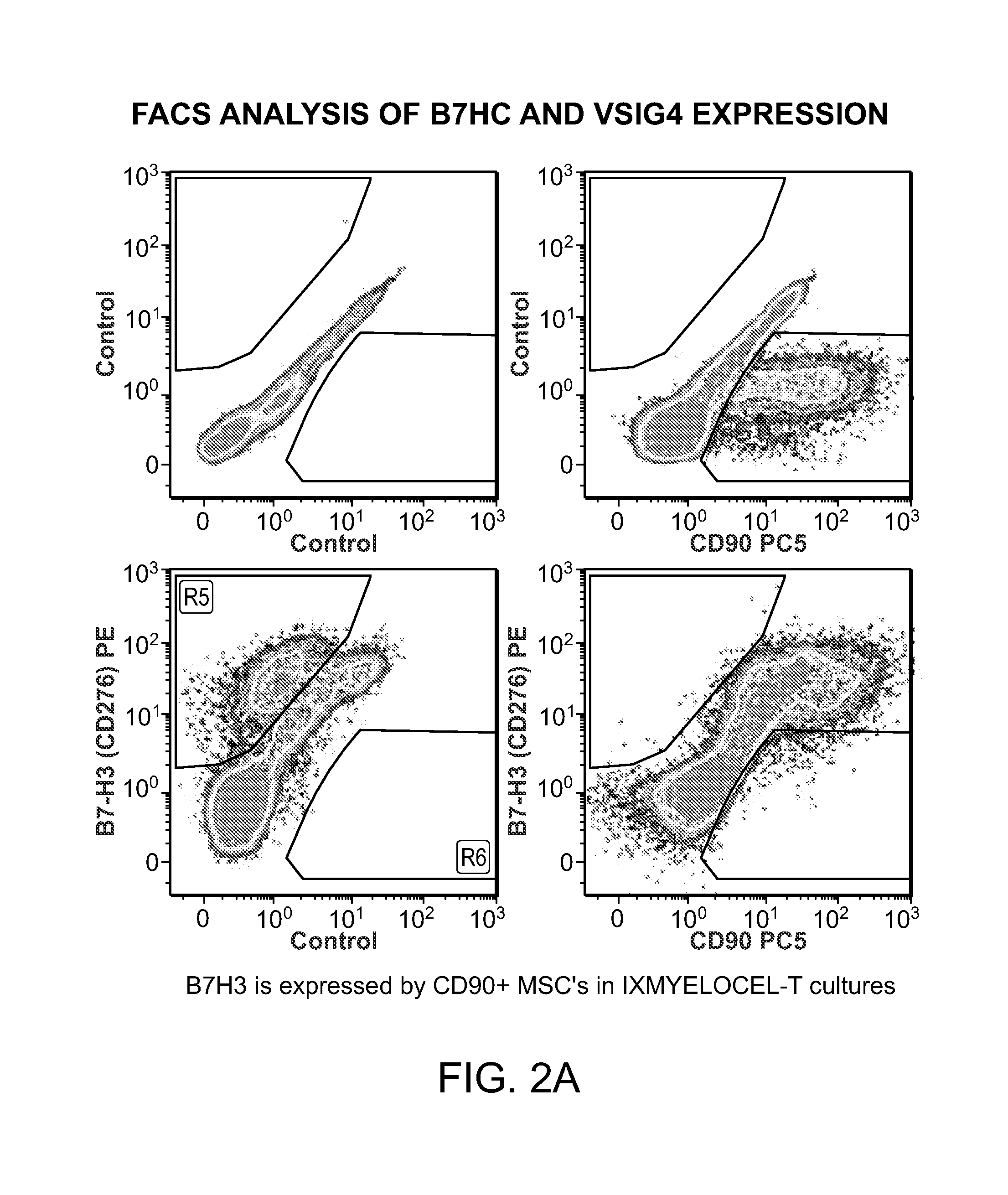Mesenchymal Stromal Cell Populations and Methods of Making Same
a technology of mesenchymal stromal cells and stromal cells, which is applied in the field of mesenchymal stromal cell populations and methods of making same, can solve the problems of preventing the growth of new biological materials, limiting the clinical effect of esc derived tissues, and preventing the immune system from rejecting new biological materials, etc., to achieve the effect of promoting the expansion of th2 type cd8 and inhibiting the activation of t-cell
- Summary
- Abstract
- Description
- Claims
- Application Information
AI Technical Summary
Benefits of technology
Problems solved by technology
Method used
Image
Examples
Embodiment Construction
[0028]The present invention is based on the surprising discovery that a mixed population of cells that are enhanced in stem and progenitor cells (referred to herein as “Tissue Repair Cells” or “TRCs”) contain mesenchymal stromal cells expressing B7 homolog 3 (B7-H3). The cells modulate the immune response in vitro. This is the first report constitutive expression of B7H3 on autologous mesenchymal stromal cells. The mesenchymal stromal cells express CD90| and are derived from cells of hematopoietic lineage. Surprisingly, the mesenchymal stromal cells of the invention, in contrast to mesenchymal stem cells, do not substantially expand in culture and do no differentiate.
[0029]Tissue Repair Cells (TRCs) are an autologous, bone marrow derived, mixed cell product composed of hematopoietic cell types and mesenchymal stromal cells, which has shown clinical efficacy in ischemic tissue repair. Gene expression studies using microarrays were conducted which compared the global gene expression p...
PUM
 Login to View More
Login to View More Abstract
Description
Claims
Application Information
 Login to View More
Login to View More - R&D
- Intellectual Property
- Life Sciences
- Materials
- Tech Scout
- Unparalleled Data Quality
- Higher Quality Content
- 60% Fewer Hallucinations
Browse by: Latest US Patents, China's latest patents, Technical Efficacy Thesaurus, Application Domain, Technology Topic, Popular Technical Reports.
© 2025 PatSnap. All rights reserved.Legal|Privacy policy|Modern Slavery Act Transparency Statement|Sitemap|About US| Contact US: help@patsnap.com



